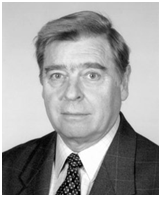
Imre Olah
Semmelweis University, Hungary
Title: Organization of avian thymic medulla and surfactant production
Biography
Biography: Imre Olah
Abstract
Thymic medulla of the chicken is compartmentalized to 1.) keratin positive network (KPN), and 2.) keratin negative areas (KNA).KPN is connected with the cortical epithelial reticular cells (ERC) and the KNA is a dilation of the interlobular septae consisting of reticular connctive tissue. “Derailed†differentiation or development of thymic ERC results in thymic cyst and/or Hassall’s body’s formation. Both cysts and Hassall’s bodies locate in the KPN of thymic medulla. Possibly, the differentiation of the cells of the thymic cyst and Hassall’s body‘s cells stopped in the early and late stages of development, respectively. The thymic ERC and the surfactant producing type II pneumocytes of the lung develop from the foregut endoderm. The transmission electron microscope shows, that the cells of the multicellular cysts are polarized and the structure of the cytoplasmic granules identical with that of the type II pneumocytes. At the apical side of the cyst epithelial cells express alpha smooth muscle actin. The lumen of the cysts is filled with a substance of medium electron density and strongly stained with anti-surfactant SP-B. These findings indicate, that the cyst epithelium actively secretes surfactant, which contribute to the central tolerance of thymus, and innate immunity. The thymic ERC and the surfactant producing epithelial cells of the cysts express MHC class II antigen unlike the type II pneumocytes.
